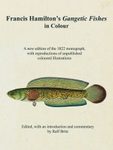By
Leon (NHBS Catalogue Editor)
19 Oct 2023
Written for Hardback

If you have any interest in oceanography and its history, you will have heard of the Challenger expedition. An early example of government-funded big science, it saw a crew of six scientists and more than 250 sailors and officers of the British Navy aboard HMS Challenger circumnavigate the globe during a 3½-year expedition from late 1872 to 1876. Focused on deep-sea exploration, it is considered the birth of oceanography. But given it was not the first nor the last oceangoing expedition, why has this one achieved such legendary status? Here, earth scientist Doug Macdougall discusses its many and diverse discoveries and shows how scientists have since built on them.
I have been meaning to get around to
Endless Novelties of Extraordinary Interest for a while, if only because of its intriguing title; words that, we soon learn, were penned by the expedition's scientific leader Charles Wywille Thomson. Macdougall is an emeritus earth scientist at the Scripps Institute of Oceanography and seems the right person for the job, having previously written books on the history of disciplines such as glaciology and geochronology.
The Challenger expedition sailed around the world's oceans and every few hundred miles stopped at a so-called station to collect basic oceanographic and marine biological data. A large part of the expedition was a matter of rinse and repeat. However, oceanic islands acted as a magnet on the scientists and much space is given here to describing what they encountered there.
The book's approach quickly becomes clear. Though it proceeds largely chronologically, the focus is less on the journey and the experiences of the people on board, and more on the science. There is much material Macdougall can draw on. After the expedition ended, its scientists would study the vast trove of data, samples, and specimens for 19 years with the help of a growing international network of other scholars. The results were published from 1880 to 1895 in a report series that would span 50(!) volumes. It was a show of government support that would leave many scientists today green with envy. Some examples of the many questions studied included the nature of the ocean floor. The thinking was that all of the world's oceans were covered in layers of muddy chalk but soon enough the scientists found different sediments. Remarkably, the seafloor sediment maps they produced for the Challenger Report have not changed much in their rough outlines since. Another open question was whether the deep sea was home to primitive organisms or even "living fossils", but no such animals were found. They did find many bioluminescent organisms, although opinions differed as to what caused this. Finally, the scientists constantly dredged up manganese nodules and worked out that these grew extremely slowly when dissolved manganese precipitated around objects. Though interest in them gradually waned after the expedition, the idea of mining the deep sea for metals has captured the imagination again in recent decades, much to the concern of marine biologists.
Macdougall is not content with just relating the past and continuously tells what has become of some of the locations the expedition visited, or what our current understanding is of the topics they studied. It is an approach the book shares with Corfield's The Silent Landscape from 2003, the previous book on the Challenger expedition for a general audience. One example is penguin evolution. Anatomist Morrison Watson studied the penguins that had been collected and concluded that the group must have diverged early on in bird evolution. However, in the absence of fossils, he would not speculate further on the matter. Since then, we have filled in many gaps and have a better picture of just how diverse ancient penguindom was. The scientists were also fascinated by birds of paradise but were only able to find a few species. It took until 2004 for a National Geographic expedition to find and photograph all 39 existing species. Another hotly contested topic at the time was the nature of coral reefs and how these formed and grew. A young upstart by the name of Charles Darwin had his ideas, but his views were not accepted by everyone, including Challenger scientist John Murray. Whereas Murray argued that reefs only formed where debris had built up to create shallow areas, time has proven correct Darwin's idea of coral atolls forming around sinking underwater volcanoes.
Of course, when writing about a historical episode such as the Challenger expedition today, you have to address past attitudes and ideas. Many of these are at least objectionable if not outright repugnable to us now. I feel Macdougall strikes the right balance, providing the context while neither defending nor condemning the people of the past. This plays out most visibly in the chapter on anthropology. The Challenger scientists were burdened by all the baggage and prejudices that characterised the cultural imperialism of the time: native people were considered inferior savages and European culture de facto superior—and the scientists could not help themselves constantly remarking on this. Yet, at the same time, they were genuinely fascinated by the people they encountered and by what they considered primitive roots of Western culture in native practices. Flawed? Yes, and of its time. Macdougall is similarly upfront about the attitude towards animals. Gathering specimens for museum collections meant killing animals and their journals betrayed "no hint of contrition" (p. 203) in doing so. Lastly, the mission did have ulterior motives; this was also an imperial project. The laying of underwater telegraph cables required an understanding of the seafloor and it did not hurt that the expedition projected power and prestige towards competing seafaring nations. However, Macdougall thinks that we should not be too cynical about this. This was not some thinly veiled excuse for Britain to expand its empire; this was first and foremost a scientific expedition to better understand the ocean.
I enjoyed Macdougall's thematic approach to the subject and I think he successfully shows why the Challenger expedition is considered groundbreaking. That said, I do have some criticism. The presentation of biographical information in chapter 2 is a bit messy: dates of birth and death are not systematically presented and sometimes lacking, and only a few portraits are included, meaning major protagonists such as John Murray and the fascinating Henry Moseley remain faceless names. We also rather abruptly leave the expedition somewhere in the Pacific. The trip out of the Pacific, the multiple stops in southern South America, and the return trip through the Atlantic do not feature here. I found my interest nourished but not yet sated.















![Die Vogel-WG: Die Heinroths, ihre 1000 Vögel und die Anfänge der Verhaltensforschung [The Bird Wohngemeinschaft: The Heinroths, Their 1000 Birds and the Beginnings of Behavioral Research]](http://mediacdn.nhbs.com/jackets/jackets_resizer_medium/26/267983.jpg?height=150&width=107)



















